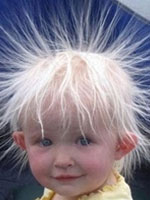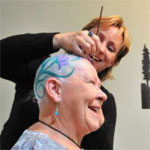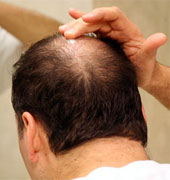Admittedly, I’m not too bright – It sounds like hair is plucked form the back of the head and transplanted in the scalp? Then the plucked hair grows back? Does this mean there would be no need to cut a strip from the back of the head and there would be an unlimited donor supply?

Actually, your conclusion is right on. If this process becomes a standard treatment for hair loss, then the need for a traditional transplant would not be needed as long as you’re willing to go through a procedure that involves plucking many hairs and have them placed into another part of the scalp, one hair at a time. It takes patience, but the hope is that the donor supply is unlimited. This assumes, of course, that the hair that grows from the original plucked hair will regrow and cycle as it did when it was in the donor supply (where the plucked hair came from).
So that’s what we’re referring to when we mention the ACell product and auto-cloning. There are a lot of variables still unknown, which is why we’re going to be studying it.

 Hi,
Hi, Read the full story —
Read the full story —  The direction that hair grows after a transplant is determined by the transplant surgeon. Some doctors place the hair straight upward reaching for the sky like you reported, while others place them in a radial direction so that the hair looks like the spokes of a bicycle wheel. Some hair restoration procedures (like those of flaps), have hair that grows 90 degrees off pointing to the side. In all of these situations, the transplants or flaps permanently point the direction of the hair.
The direction that hair grows after a transplant is determined by the transplant surgeon. Some doctors place the hair straight upward reaching for the sky like you reported, while others place them in a radial direction so that the hair looks like the spokes of a bicycle wheel. Some hair restoration procedures (like those of flaps), have hair that grows 90 degrees off pointing to the side. In all of these situations, the transplants or flaps permanently point the direction of the hair. I’ve not seen a case like you’re describing, so it’s difficult for me to point the finger at minoxidil for bald spots that have lasted over a year. Even if there was a topical allergy to the medication, I’d expect you should’ve seen some regrowth by now in the impacted areas. It’s worth noting that a disease like alopecia areata can cause bald spots like you’re describing, though the more likely thing is that you were going bald in that area with or without the medication.
I’ve not seen a case like you’re describing, so it’s difficult for me to point the finger at minoxidil for bald spots that have lasted over a year. Even if there was a topical allergy to the medication, I’d expect you should’ve seen some regrowth by now in the impacted areas. It’s worth noting that a disease like alopecia areata can cause bald spots like you’re describing, though the more likely thing is that you were going bald in that area with or without the medication.